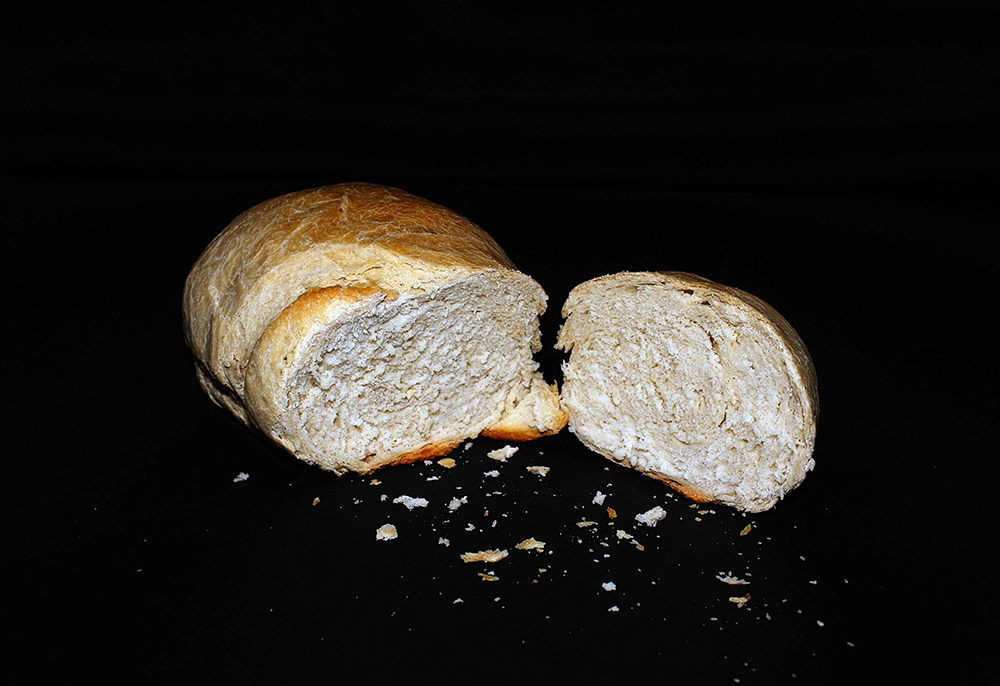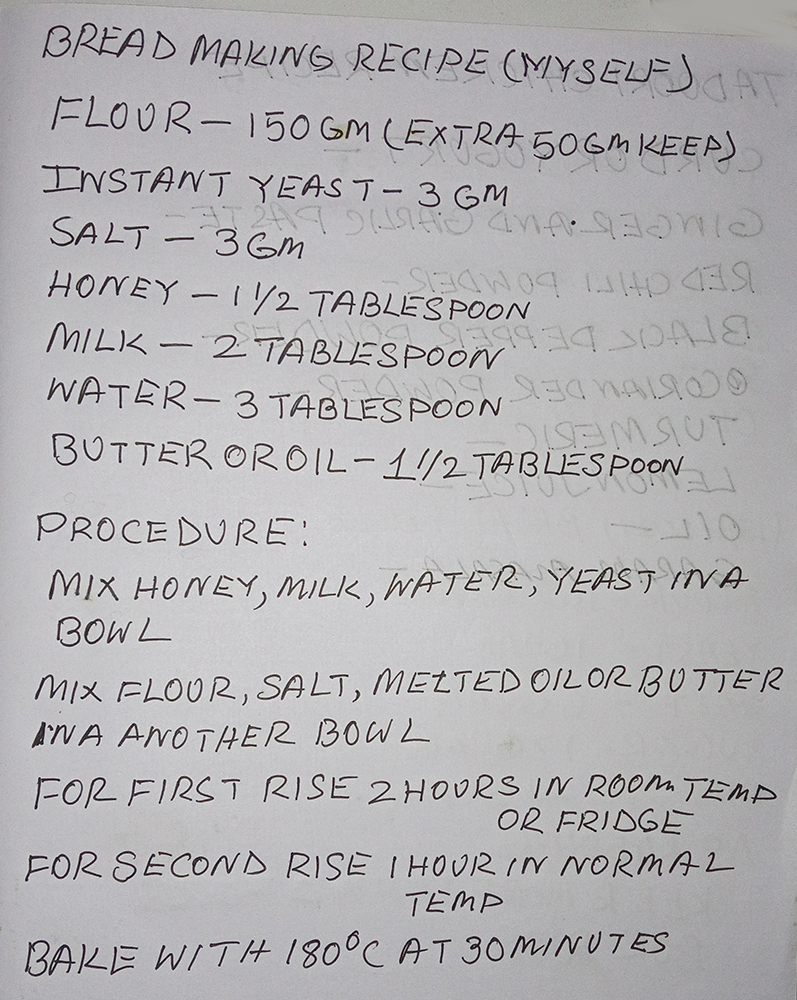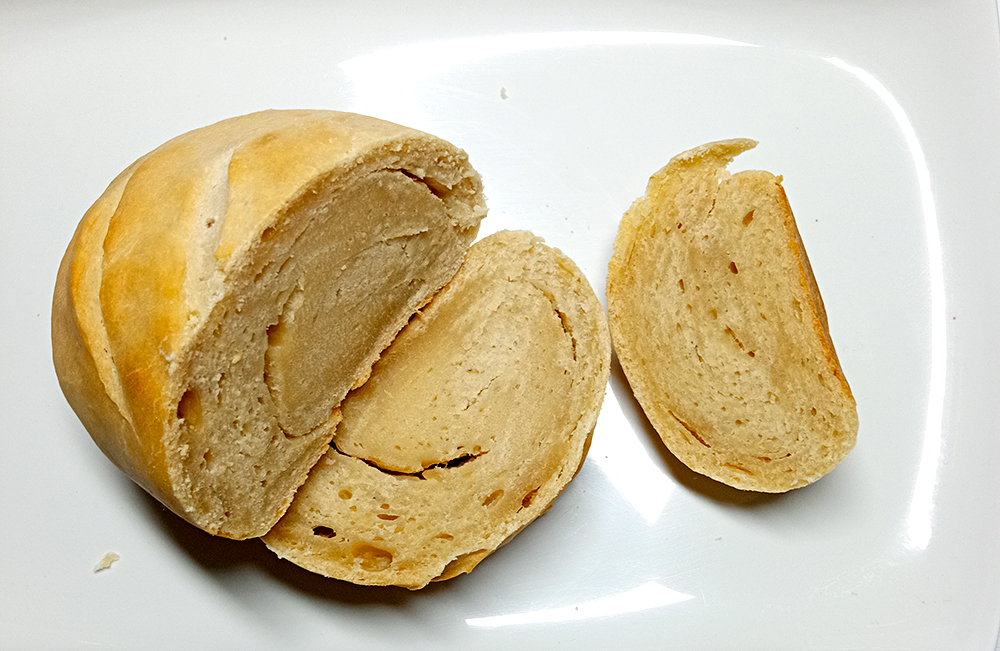July 15, 2021 - 10:18pm

How to make bread soft?

I am a bread enthusiast from India. Now, I am facing a peculiar problem regarding making bread soft. As I use Indian flour for making the bread. I use OTG or Air Fryer for making the bread. But every time I failed as I could not understand what makes me unsuccessful in making soft bread. I took the tutorials guides from YouTube but not getting a success. Please check the attached picture of my bread as well as my recipe, help me to solve my problem.





Needs more liquid. Start by doubling the milk and water, see what happens, go from there. Enjoy!
Okay...I will apply it tomorrow...thank you!
Pixnum, if you use a pan instead of free formed bread it will be much softer.
Danny
The fat in your recipe should make very soft bread. The photo suggests limited rise and dough development. A couple of questions:
How much are you kneading the dough?
Are your first and second rises doubling in volume?
I am not sure you need the honey, and one gram of yeast is plenty, if there is enough time to rise. If you have a scale to measure grams, it's better to measure both wet and dry ingredients that way. You probably want wet ingredients to be about 70% the weight of the dry ingredients. I might also scale the fat back a bit.
How much are you kneading the dough?
6 minutes
Are your first and second rises doubling in volume?
No
If I need to rise faster, what amount of yeast I will require? Please advice me.
1. I suggest watching one or two good videos of the whole process. You might try John Kirkwood's Sandwich Bread at https://www.youtube.com/watch?v=HWpSbYV96_c I think this is the kind of bread you are trying to achieve: a soft loaf, with some oil and sugar in the dough. I am suggesting Kirkwood because he's highly competent. Not all youtube tutorials are good. Watch his video for dough texture: what a well-kneaded dough looks like. This is hard to put into words, but becomes a lot clearer when you watch. Also note the fermentation times he allows, and what a well-risen dough looks like. (You might also try Kirkwood's proportions: you are perhaps using too much oil.)
2. Let your dough take its time. It is tempting, when you are a beginning baker, to try to rush the rise with higher temperatures, more yeast, sugar and so forth, but the result is bad bread. Instead, try to find a time when you are home for most of the day and you can wait patiently for your rises to double. Slow is good! Clazar123's advice below is excellent. You already have more than enough yeast! I would use only one gram with that quantity of flour.
Okay! Thank you for your advice!
Could you tell me my current bread-making problem after taking your advice?
Your dough appears to be severely underfermented- both in bulk and in final proof.
Your recipe calls for the rises by time but not how the dough is behaving. Also, rising at room temp or rising at fridge temp totally affects the rise. What is your normal room temp? Ideal temp for promoting yeast growth is 27C. If your room temp is significantly higher or lower, the rise time will need to be adjusted to achieve doubling for the bulk rise (1st rise). A refrigerator is used to retard or slow a rise to improve flavor production ( and it is usually done overnight or a long period of time) or because of excess heat in the dough (for a shorter period of time.
"first rise-2 hrs room temp or fridge, second rise 1 hour in normal temp".
So raise your dough to almost double or double for the first rise-regardless of timing. It should not take too long at 27C-probably 1-2 hrs. Or put it n the fridge overnight, take out the next day and rise to double at "room temp". Then shape,proof(until almost double) , and bake.
Tend the dough-NOT the clock.
If you have a scale, I'm guessing you do, try using 50% of the floor amount for the liquid amount. 150g flour x . 5 = 75g. You can split that between the milk and water.
Also, mix everything and let it sit for about 30 minutes, then knead for a couple minutes before each rise. Enjoy!
Great advice!
That's the basis of what they call bakers math. All ingredients are a percentage of the total flour amount. Makes it easier to make adjustments when needed. Enjoy!
True!
I have been utilizing percentages now, I will never go back. I can use any flour I want, any hydration I want, and the flavors will always be there, all that remains is what was previously mentioned if you use baker's percentages: tending the dough. If a recipe says let rise for 1 hour or until doubled, it's not really an or, you need to let it double even if it takes 2 hours. All yeast, flours, temperatures, everything is different for every baker.
You can look at King Arthur's basic loaf recipes. Those were my starting points and I never had any issue getting that store-bought crumb and very soft. You can also utilize the tangzhong method commonly used for Japanese milk breads...
You take a percentage of the flour, a percentage of the water, and simmer them into a thick slurry in a small saucepan for a few minutes. Let cool to room temp then proceed with the recipe as normal. If you feel you need more water as it's a bit dry, add a tbsp at a time. It makes the bread extremely soft and also allows it to stay fresh for longer at room temp.
Your assumption is true, but I am still learning the bakery skill as it will take more time for me to hone it. It is true that the more I commit mistakes at this stage, the more I will have the chance for learning as well.
At last, the perfect bread is made by me through a bread machine. Just check it and share your views as well.
Congratulations! What are you eating it with?
Thank you!
Actually, I always eat bread with butter or mixed fruit jam in the morning. But I made bread the previous day's evening so that I could do breakfast the next day morning. In course of time, I will try to taste the different kinds of bread and make myself happier in this way.
Very nice looking slices!
Thank you!